How Far Can You Go? Real Dual Battery E-Bike Range for Canadian Delivery Riders
Running out of power halfway through a full day of deliveries is every Canadian courier's nightmare. With customer expectations at an all-time high and many cities expanding outward, the pressure is on to get every order delivered—fast and on time. That's why the dual battery e-bike is such a breakthrough. For riders looking to maximize real-world range, fight off winter chill, and stay on the road longer, these systems deliver the extra distance you actually need on a single charge.
Modern dual battery setups don't just double the numbers on paper, they make real delivery shifts possible across Toronto, Montreal, or Vancouver—even in harsh weather. In this post, I’ll break down how a dual battery e-bike works, realistic range expectations (including why numbers vary in Canadian winters), and what delivery pros should consider before upgrading. For a deeper look at different bike setups and how dual batteries stack up to single ones, check out this overview of dual vs single battery e-bikes.
What is a Dual Battery E-Bike and Why Does It Matter for Delivery?
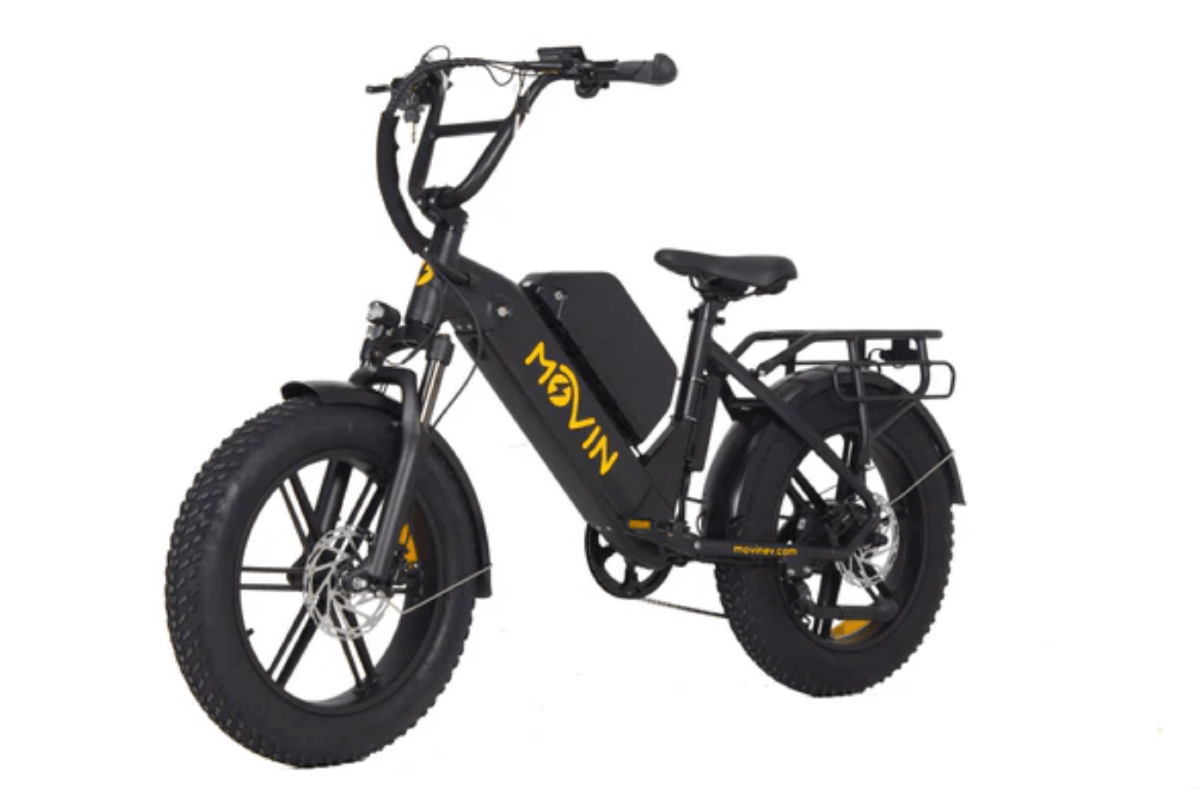 Dual battery e-bike completing deliveries on a snowy Canadian street. Image created with AI.
Dual battery e-bike completing deliveries on a snowy Canadian street. Image created with AI.
When you're out on delivery—especially in a Canadian city where winter, steep hills, and sprawling neighborhoods are part of the job—a standard e-bike battery can only take you so far. That’s where the dual battery e-bike steps in. This smart design uses two separate batteries on one bike, so you can keep rolling, finish more jobs, and stop worrying about plugging in halfway through your shift.
How Does a Dual Battery E-Bike Work?
A dual battery e-bike is built to carry two battery packs—typically mounted on the frame, the rear rack, or even inside the downtube. Most designs connect the two either in parallel (both batteries supply power at once, smoothing out load and boosting performance) or in relay (the bike uses up one battery before switching to the backup).
This setup nearly doubles your available range, though extra weight and challenging conditions mean it’s a bit less than twice as far in real-world use. The system also helps manage battery stress, offering backup power on steep hills or busy routes where you’d normally drain a single battery fast.
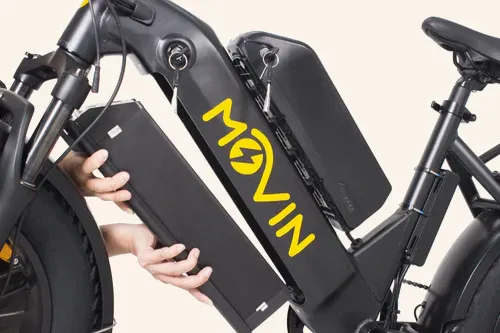 ### Why Dual Batteries Are a Game-Changer for Delivery
### Why Dual Batteries Are a Game-Changer for Delivery
The payoff is simple: delivery riders don’t just need “a little extra range.” Running out of juice means lost time and tips, or worse, getting stranded in the cold. Dual battery e-bikes bring three major benefits for delivery pros:
- Longer range, real-world tested: Dual batteries can deliver 120 to 180 km (75–110 miles) per charge, depending on factors like weather, hills, and payload. Canadian riders for Movin’ have stacked up millions of kilometers of real-world testing, from icy January days in Toronto to uphill sprints in Vancouver.
- Less downtime, more money: Instead of pulling over to swap batteries or search for an outlet, you keep earning. No rushed mid-shift charge. No stress about unfinished orders as the afternoon wears on.
- Reliability in tough weather: Batteries drain faster in the cold, especially when you’re stopping and starting with a heavy load. Doubling up gives you a buffer, so nothing slows you down when temperatures drop or routes run long.
The Proof: Movin Pulse Professional Delivery E-Bike
Let’s look at a proven example. The Pulse Fat Tire Delivery E-Bike specifications lay out a system with up to 180 km of range in optimal conditions, built for riders facing everything from spring rain to deep winter freeze. Equipped with two large batteries and fat, puncture-resistant tires, the Pulse can take on rough streets, steep driveways, and slushy shortcuts—all with the backing of thousands of delivery riders clocking over 30,000 km per year on Canada’s toughest routes.
If your job is about making as many deliveries as possible, in every season, you’ll notice the upgrade right away. Spend less time charging and more time riding, and keep the workday moving on your schedule.
Real-World Range: How Far Can You Go on a Dual Battery E-Bike in Canada?
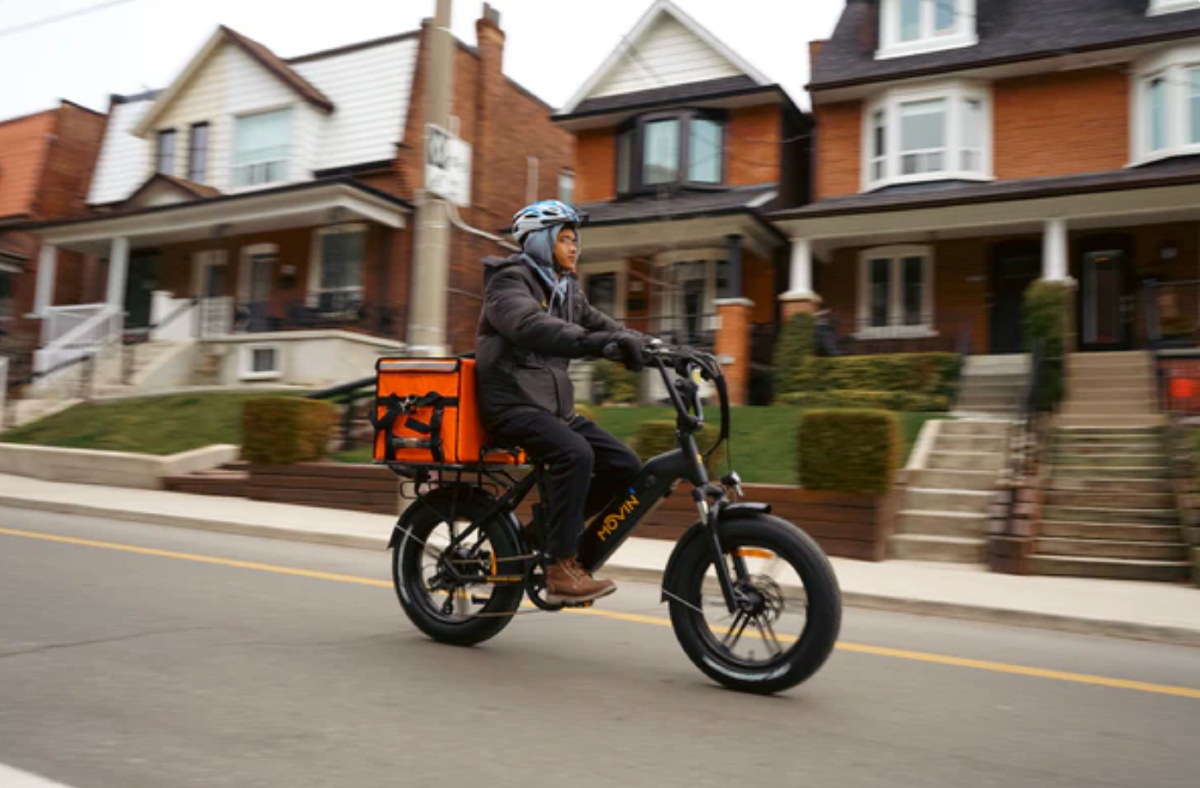 The promise of a dual battery e-bike is simple: more distance, more deliveries, fewer charging stops. But in Canada, range isn’t just about numbers on a spec sheet. It’s about how the bike performs through ice, slush, heavy payloads, and subzero mornings. If you’re riding a model like the Movin Pulse, you know that posted range can swing based on the real world—snow, temperature, and cargo all matter. Let’s unpack how range plays out for professionals and what you can actually expect across a full shift.
The promise of a dual battery e-bike is simple: more distance, more deliveries, fewer charging stops. But in Canada, range isn’t just about numbers on a spec sheet. It’s about how the bike performs through ice, slush, heavy payloads, and subzero mornings. If you’re riding a model like the Movin Pulse, you know that posted range can swing based on the real world—snow, temperature, and cargo all matter. Let’s unpack how range plays out for professionals and what you can actually expect across a full shift.
How Winter and Cargo Impact Your Range
Canadian winters present unique challenges for every electric bike, but especially for delivery riders. Right off the bat, frigid temperatures make lithium batteries less efficient, slashing your available range by a noticeable amount. Riders report that when it drops below freezing, you might lose up to 30 percent of expected range, even on a high-capacity dual battery e-bike. For example, while the Movin Pulse is capable of 180 km per charge in mild spring and fall conditions, you’ll see real-world averages around 110 to 120 km in cold weather. That’s still enough for a long day of deliveries, but never something to ignore in planning.
Delivery cargo brings another variable. Heavier loads, frequent stops, and uphill hauls all make the motor work harder and draw more power, especially when paired with studded or fat tires designed to grip ice and snow. I’ve seen real delivery data from riders who push 30,000 km per year—when carrying a full load, using high pedal assist, and tackling slippery streets, their mileage lands closer to the conservative side.
Key Range Factors:
- Temperature: Cold air slows chemical reactions in batteries, leaving less usable power. Subzero rides cut range most, while above-freezing days let you go further.
- Cargo Weight: Every extra kilo (from food packs, drinks, or parcels) requires more motor power, which means quicker battery drain.
- Riding Style: Lots of stops, starts, and higher speeds zap range. Smooth, steady riding and lower assistance levels help stretch each charge.
- Tire Type and Pressure: Fat tires give you grip in snow but add rolling resistance, especially when under-inflated for extra traction.
- Route and Terrain: Steep hills and rough city streets push the battery harder compared to flat, dry paths.
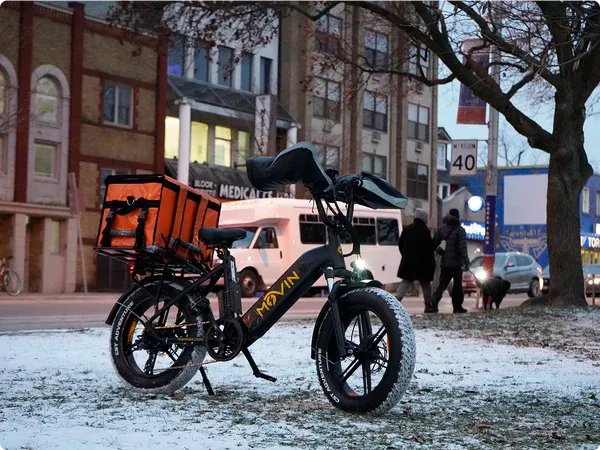 #### Tips to Maximize Your Dual Battery E-Bike Range in Winter
#### Tips to Maximize Your Dual Battery E-Bike Range in Winter
If you want every kilometer your e-bike can offer, you need to be smart—especially when the mercury drops. Over years of feedback from Canadian pros, I’ve learned a handful of reliable tactics:
- Pre-warm your batteries: Store batteries indoors before use, and if you have to leave your bike outside, wrap batteries or use insulated covers to help retain heat as you ride.
- Use pedal assist strategically: Opt for lower pedal assist modes when possible to conserve charge, reserving max boost for high-traffic crossings or steep sections.
- Plan efficient routes: Map out the most direct paths with minimal hills and stops. Avoid detours on snowy or slick streets that add unnecessary distance.
- Monitor tire pressure: Check it before every shift. Properly inflated tires reduce drag but keep just enough grip for safety.
- Lighten your load: Only take as much as you can safely handle in one trip. Split big orders if it means keeping speed and efficiency high.
- Dress for the weather: Keeping yourself warm ensures you don’t need to overuse the motor just to get through tough stretches quicker.
Here’s a quick summary of what real delivery riders have reported in winter using the Movin Pulse dual battery e-bike:
ScenarioAverage Range (km)NotesMild spring/fall, light cargo170–180Fat tires, mixed terrainWinter (below 0°C), loaded110–120Frequent stops, extra clothingSummer, mostly flat city routes150–160Minimal wind, steady riding
For more strategies and pro tips, check out the Long-Range E-Bike Guide which is packed with more ways to stretch your battery life across all four seasons.
Want to know how Movin’s models stack up or see more range stats across setups? Browse an in-depth Pulse Fat-Tire 120km Dual Battery EBike Canada review. It highlights not only battery chemistry but also how real couriers keep rolling, no matter what Canada throws at them.
Comparing Single vs. Dual Battery E-Bikes for Delivery Work
 Choosing the right electric bike setup can shape your entire workday. For Canadian delivery riders, the decision often comes down to a single vs. dual battery e-bike. The contrast is clear once you add long routes, tough weather, and the pressure of back-to-back deliveries. Here’s what it actually means for your range, stress levels, and bottom line when you compare these two setups.
Choosing the right electric bike setup can shape your entire workday. For Canadian delivery riders, the decision often comes down to a single vs. dual battery e-bike. The contrast is clear once you add long routes, tough weather, and the pressure of back-to-back deliveries. Here’s what it actually means for your range, stress levels, and bottom line when you compare these two setups.
Real-World Range: Single Battery Limits vs. Dual Battery Freedom
With a single battery setup like the Movin Tempo Max, you’re looking at about 80 km per charge in typical conditions. That’s usually enough to handle city rides, lighter days, or shorter routes. During mild weather or when your load is light, this works. But in winter, thick snow and cold temps chip away at your battery life. That number can drop by 20-30 percent or more, giving you as little as 55-65 km if you’re carrying lots of food packs during a freezing Toronto evening.
Dual battery systems, such as the ones on the Movin Pulse delivery e-bike, nearly double your realistic on-road range. In optimal conditions, riders can see up to 180 km per charge. Even after the cold bites back and cargo adds up, it’s still easy to crush a full day’s roster without pausing for a recharge or battery swap. The extra power becomes a real shield against the unpredictability of Canadian weather and delivery routes.
FeatureSingle Battery E-Bike (Tempo Max)Dual Battery E-Bike (Pulse)Approx. Max Range (km)80170-180Winter Avg. Range (loaded, km)55-65110-120Full-Day Shift (urban delivery)Sometimes falls shortEasily coveredCharging Interruptions Needed?LikelyRarelyBest ForShort/urban, lightMulti-shift, heavy
For more on how these systems compare, check out the detailed dual vs single battery ebikes explained.
Day-to-Day Delivery Experience
The real test is how these differences feel after weeks of city delivery. Riding with a single battery setup works well if you keep shifts short or know you’ll pass by charging spots. You have a lighter bike, usually more agile in traffic, and need less upfront investment. But as soon as you stack long hours or more orders, that anxiety creeps in: Can I finish before my battery hits zero? Should I turn off the headlight, lower my assist, or skip breaks to make sure I have enough juice?
With dual battery e-bikes, the mental load drops. You ride with confidence, taking detours when needed, picking up extra orders late in the day, or handling surprise weather without sweating over your power bar. The added weight from a dual setup is noticeable, especially when lifting or carrying inside, but it’s a small price for the extra range and peace of mind.
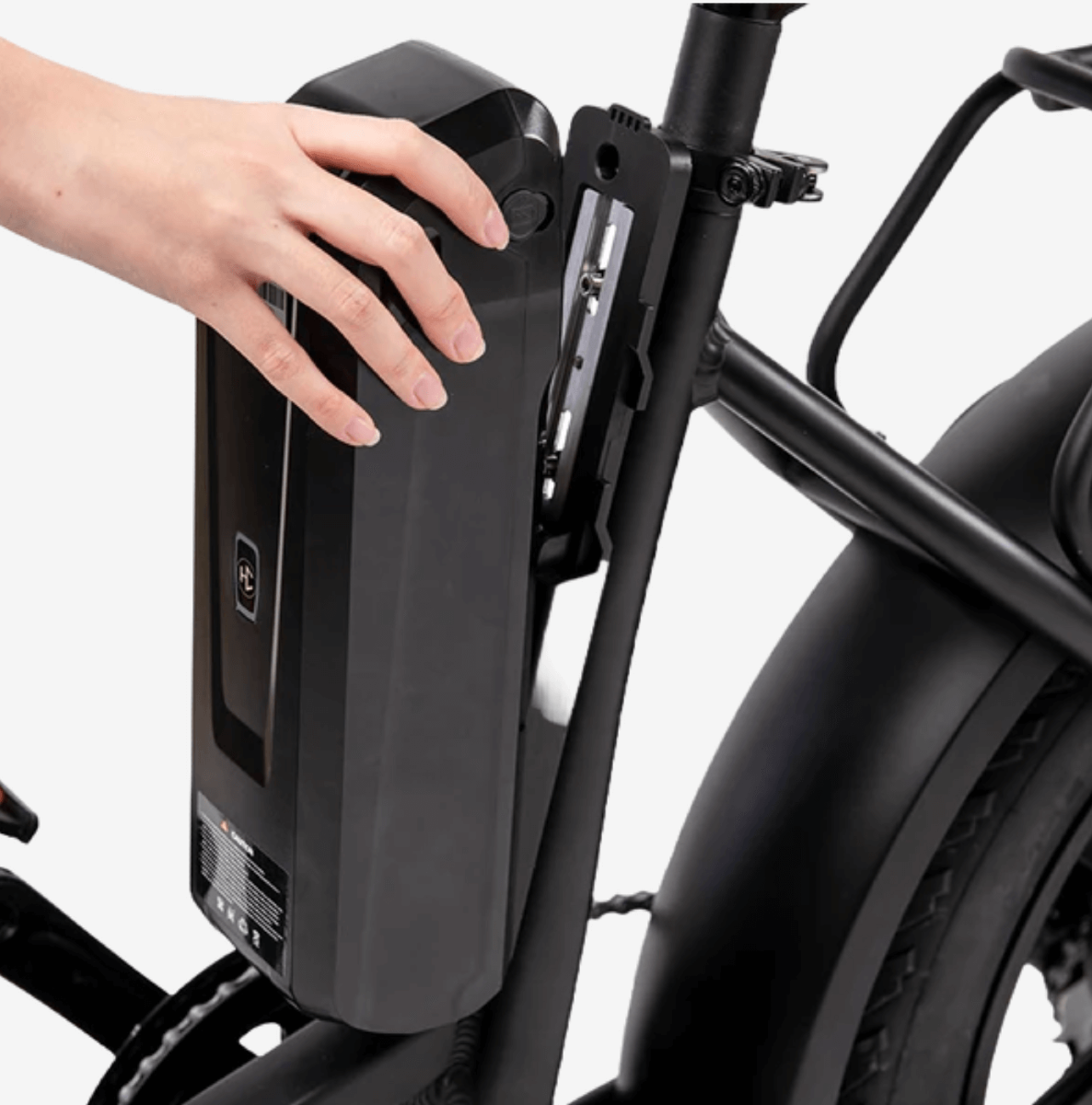 ### Pros and Cons for Delivery Riders
### Pros and Cons for Delivery Riders
Let’s spell out what single and dual battery bikes bring to your work life. Each has a clear fit, but only one handles Canada's long, cold delivery seasons with fewer compromises.
Single Battery E-Bikes (like Tempo Max):
-
Pros:
- Lighter overall weight, easier to carry upstairs or park in tight spots
- Lower initial cost
- Simple charging routine, only one battery to monitor
-
Cons:
- Higher risk of “range anxiety” on long days
- More likely to cut shifts short or pause to charge mid-route
- Drop in range during winter or with heavy loads
Dual Battery E-Bikes (like Pulse Delivery):
-
Pros:
- Substantially longer range for full-shift delivery work
- Reliable even in cold, snowy conditions
- Handles heavier cargo without a major hit to range
- Less stress about where or when to recharge
-
Cons:
- More weight, especially noticeable lifting the bike or loading onto vehicles
- Slightly higher upfront investment
- Two batteries to maintain (but you get a big payoff in distance)
Many riders share that dual battery setups have changed their work routines—less time spent “managing” battery life, more time riding and earning. For pros who rack up 100+ km in a single winter day, the choice starts to look pretty straightforward.
For a closer look at performance and features on the road, take a peek at this in-depth Pulse fat-tire dual battery e-bike in Canada, which covers winter range, rider stories, and how extra power translates to real savings for Canadian delivery pros.
Key Features to Look For in a Dual Battery Delivery E-Bike
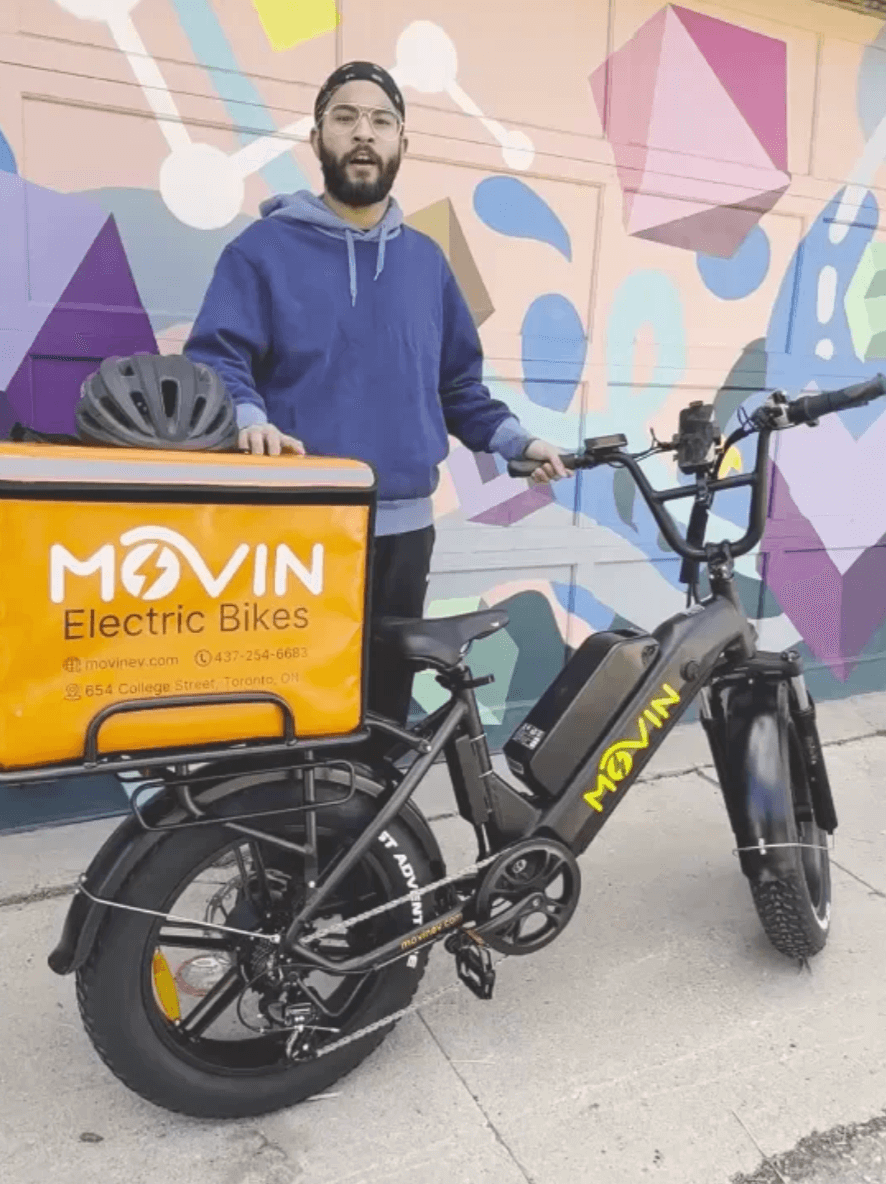 Dual battery fat-tire e-bike riding on a snowy city street. Image created with AI.
Dual battery fat-tire e-bike riding on a snowy city street. Image created with AI.
Choosing a dual battery e-bike for Canadian delivery work is all about matching real needs to real-world results. It's not just about having more power—it's about surviving winter, making it through multiple shifts, and carrying heavy cargo while keeping safe. Here’s what I’ve learned matters most after thousands of kilometers on the road.
High-Quality, Safe Battery Tech
It all starts with the batteries. For delivery pros, lithium-ion cells aren’t just the industry standard, they’re essential for performance and safety in cold weather. Top models use name-brand cells rated for many charge cycles, which means you get dependable range day after day. Look for smart battery management systems that balance discharge, prevent overheating, and support fast, safe charging. Dual battery setups should either allow for parallel draw or automatic switching, keeping voltage steady as the day goes on.
If you’re comparing specs, keep an eye on:
- Battery voltage and amp-hour rating (higher numbers mean more stored power)
- Well-tested battery management circuitry
- Certifications for Canadian safety and performance
Want to understand even more about how voltage makes a difference in the cold? Check out this guide on how 48V and 52V batteries affect e-bike performance.
Fast, Reliable Charging
Delivery isn't a slow grind. When both batteries are drained, being able to plug in and get back to work quickly really matters. Dual battery bikes should allow for concurrent or rapid sequential charging. You’ll want systems that prevent overcharging, balance cells, and avoid long wait times between shifts.
Choose models that:
- Support fast chargers built for Canadian voltage standards
- Offer simple plug-and-play charging, even if both batteries stay mounted
- Have clear indicators so you always know charge status
Fat Tires and All-Weather Durability
Canada’s streets can be rough—snow, potholes, salt, and rain are all in play for delivery riders. Fat tires (typically 4” wide or more) grab onto slick roads and cushion rough patches, so you don’t lose control when things get icy.
Essential qualities to look for:
- Puncture-resistant, wide tires for winter grip and rough roads
- Waterproof or water-resistant electronics and connectors
- Strong disc brakes for safe stops on slush or gravel
The whole bike should be built for year-round punishment. Sealed bearings, corrosion-resistant hardware, and fenders are not “nice to haves”—they’re essentials.
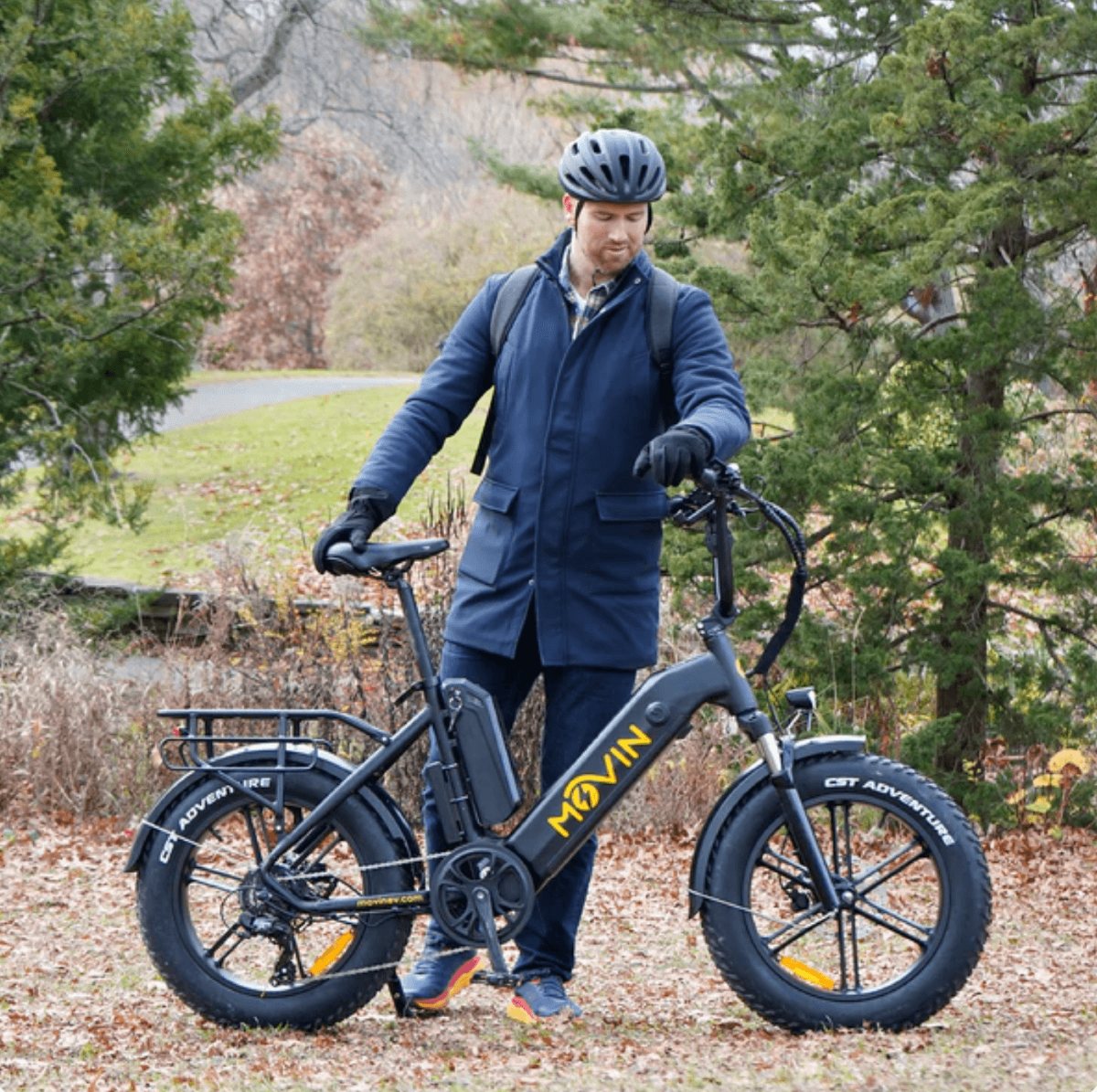 ### Heavy-Duty Racks and Cargo-Ready Frames
### Heavy-Duty Racks and Cargo-Ready Frames
Deliveries mean serious payload day in and day out. A proper dual battery delivery e-bike features a cargo rack built to handle much more than a normal commuter bike can. It should be sturdy, rigid, and rated for high weight. The bike frame itself also needs to absorb shocks and flex from constant loads without warping or rattling.
Look for:
- Frame-mounted racks that connect directly to the structure (not just seat posts)
- Reinforced welds at rack attachment points
- Official weight ratings for at least 35 kg (about 77 lbs) or more
All-Weather Components
Every switch and cable must hold up against rain, sleet, snow, and summer heat. Exposure wears out weak parts fast, but quality dual battery e-bikes come with:
- Weather-sealed connectors and cabling
- Motors with thermal and moisture protection
- Heavy-duty pedals, shifters, and touchpoints built for gloves and wet days
Warranty, Support, and Real-World Testing
I always recommend choosing e-bikes that offer a solid warranty from a Canadian company. Delivery bikes work hard, and when things go wrong you need fast, local help. Leading brands like Movin offer dealer support, parts, repairs, and direct help in major cities. It’s good peace of mind.
Real-world durability means more than flashy marketing. The best bikes have racked up tens of thousands of kilometers in actual delivery conditions, not just in a lab. Look for company pages or rider stories sharing the truth about long-term use and rider feedback.
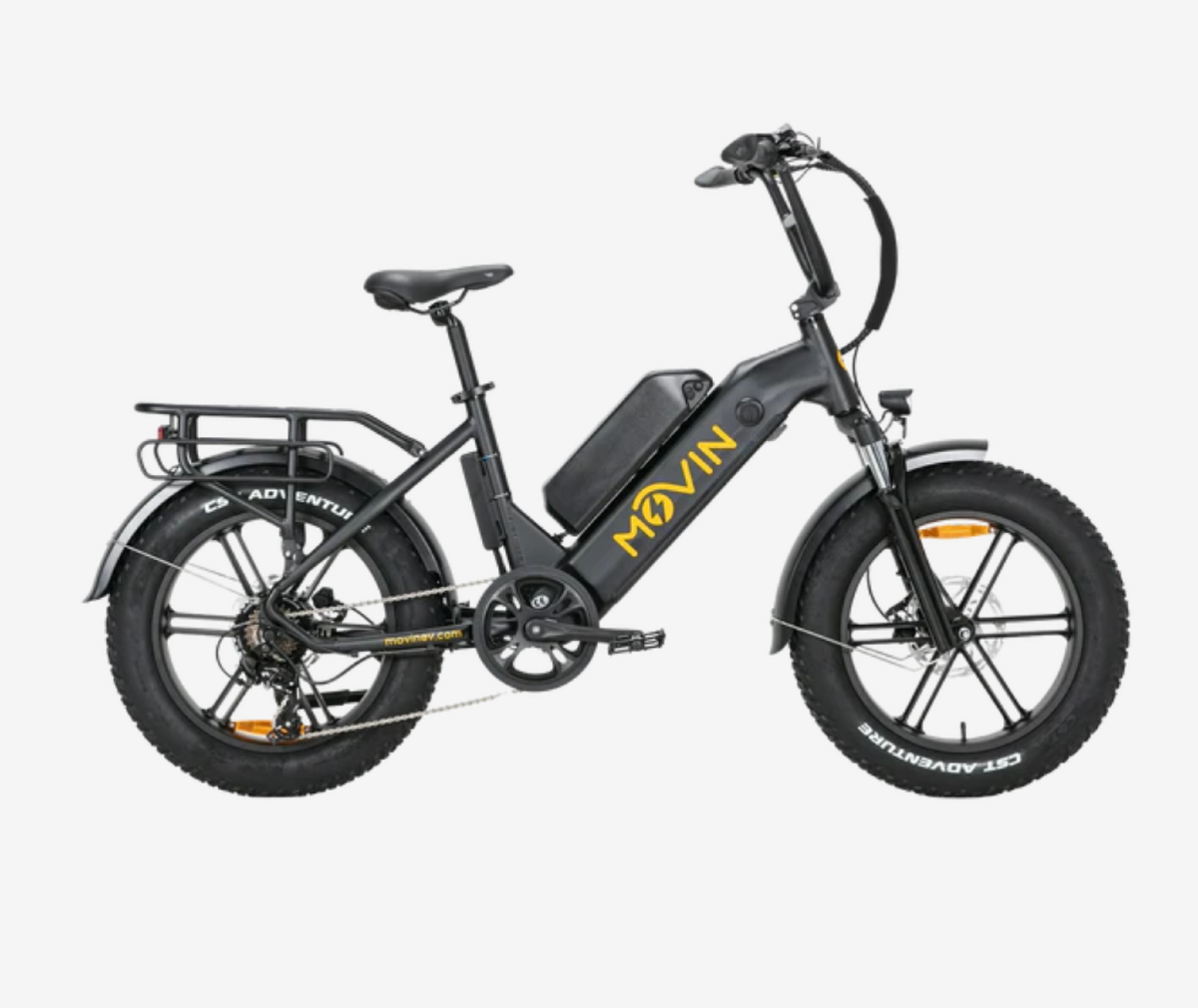 ### Quick Checklist: What to Prioritize
### Quick Checklist: What to Prioritize
When you’re scanning models, use this quick list as your north star:
- Lithium-ion dual battery system with smart protection
- Fast, efficient charging built for dense urban use
- Fat, puncture-resistant tires for poor weather and road conditions
- Heavy-duty cargo racks and reinforced frames
- Full weather protection (cables, connectors, sensors, and batteries)
- Reliable support and proven, real-world durability
For those wanting a deeper dive into delivery-ready designs, the Movin Pulse Professional Delivery E-Bike sets a high bar in all these areas—from battery to build quality to tested Canadian toughness.
Choosing a dual battery e-bike is about getting more than range. It’s about building a daily partner that thrives when the weather gets wild, the orders pile up, and the roads say otherwise.
Conclusion
A dual battery e-bike takes the stress out of delivery shifts. I can stay focused on my route—not my battery bar—knowing I have enough range for long, busy days, even when winter hits hard. With two batteries working together, I get consistent power and no longer worry about running low during that last round of deliveries.
This upgrade is more than just numbers. It's about having a dependable partner on the road that helps me go farther, earn more, and power through rough weather across any Canadian city. Choosing a model like the Pulse Fat Tire means I ride with stability, safe braking, and enough watt-hours to keep pace with real working conditions.
If you want to see what this looks like in practice, check out the Professional delivery eBike product page for specs or browse the latest range guides. Making the switch means fewer limits and more peace of mind as you roll through every season. Thanks for reading. If you’ve already made the jump, let me know your experience below—I’d love to hear how a dual battery e-bike is changing your delivery game.
